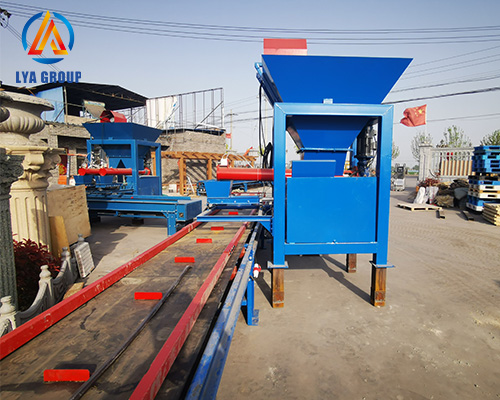Floor tile feeding machine
News 2024хЙД4ц4цЅ 105

floor tile feeding machine is a type of equipment used in the production of floor tiles to automate the process of feeding raw materials or semi-finished tiles into subsequent stages of the production line. It helps to ensure a continuous and efficient flow of materials during the manufacturing process. Here are some key features and components typically found in a floor tile feeding machine:
Material feeding mechanism: The feeding machine is equipped with a mechanism that facilitates the controlled feeding of raw materials or semi-finished tiles into the next stage of the production line. The specific mechanism can vary depending on the type of floor tile and the manufacturing process. For example, it could involve conveyors, robotic arms, or pneumatic systems.
Conveyor systems: Conveyor belts or roller conveyors are often used in floor tile feeding machines. They transport the tiles or raw materials from one stage to another, ensuring a smooth and continuous flow. The conveyor systems are designed to handle the weight and dimensions of the floor tiles being produced.
Adjustable speed and positioning: The feeding machine typically allows for adjustable speed and positioning of the tiles or materials. This flexibility enables synchronization with other machines in the production line and ensures accurate placement or alignment of the tiles.
Control system: The feeding machine is controlled by a programmable logic controller (PLC) or computer-based system. The control system allows operators to set parameters such as the speed, timing, and positioning of the materials being fed. It also monitors the process and can make real-time adjustments to optimize efficiency and accuracy.
Safety features: Floor tile feeding machines often include safety features to protect operators and prevent accidents. These features may include emergency stop buttons, safety interlocks, guards, and sensors to detect irregularities or obstructions in the feeding process.
Integration with other machines: The feeding machine is designed to integrate seamlessly with other machines in the production line. It ensures a consistent flow of materials between different stages of tile production, such as feeding semi-finished tiles into curing ovens or feeding raw materials into mixing or molding machines.
Maintenance and cleaning: Some feeding machines are designed for easy maintenance and cleaning. They may have features such as quick-disconnect fittings, easy access to critical components, and automated cleaning cycles to facilitate regular maintenance and prevent cross-contamination between batches.
A natural stone doser machine, as a dedicated standalone equipment, is not a common term or specific machine in the stone processing industry. However, I can provide information on the dosing process involved in the utilization of natural stone in various applications.
In the context of natural stone processing, dosing refers to the precise measurement and dispensing of materials used in combination with natural stone, such as adhesives, sealants, colorants, or surface treatments. These materials are typically applied during the installation, finishing, or restoration processes. While dosing can be done manually, there are various equipment and tools that can aid in the dosing process. Here are some examples:
Adhesive dispensing machines: Natural stones are often installed using adhesives or bonding agents. Adhesive dispensing machines, such as caulking guns or adhesive applicators, can help control the flow and dosage of the adhesive onto the stone or substrate, ensuring accurate and consistent application.
Colorant dosing systems: In some cases, colorants or dyes are applied to enhance or alter the appearance of natural stones. Colorant dosing systems are used to precisely measure and mix the colorant with the appropriate carrier or binder. These systems can include pumps, metering devices, and mixing chambers to achieve the desired color consistency.
Sealant application tools: Sealants are commonly used to protect natural stones from stains, moisture, or other environmental factors. Various tools and equipment, such as sprayers, rollers, or brushes, can assist in the dosing or application of sealants onto the stone surfaces. These tools ensure even distribution and coverage of the sealant.
Surface treatment machines: Natural stones may undergo surface treatments, such as honing, polishing, or sandblasting, to achieve desired textures or finishes. Surface treatment machines, such as polishing or honing machines, can be used to dose and apply abrasive materials or polishing compounds onto the stone surfaces, facilitating the desired treatment process.
